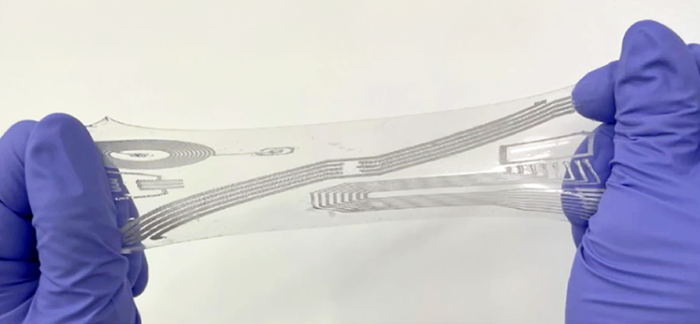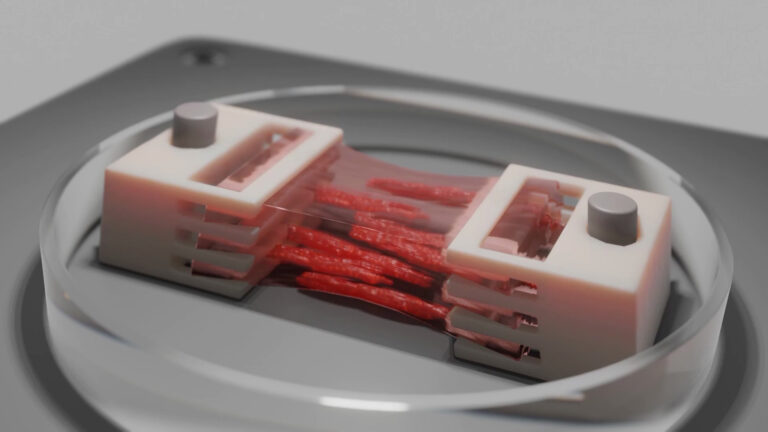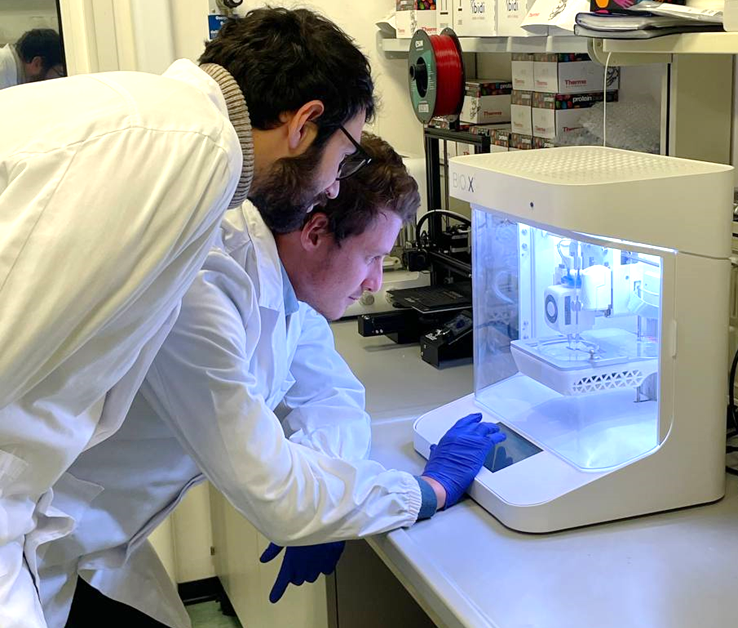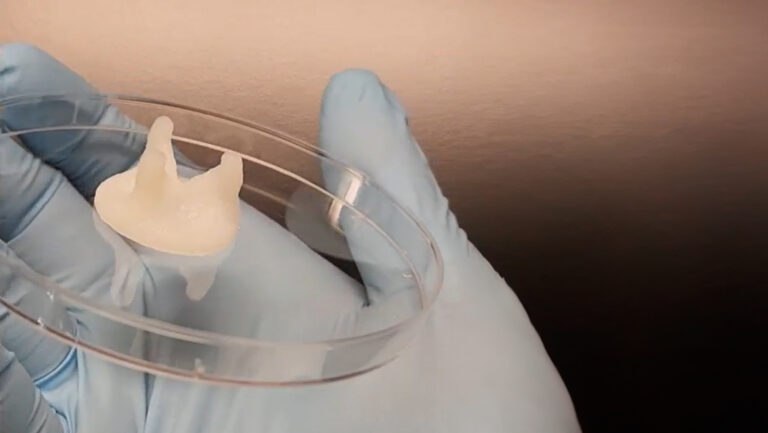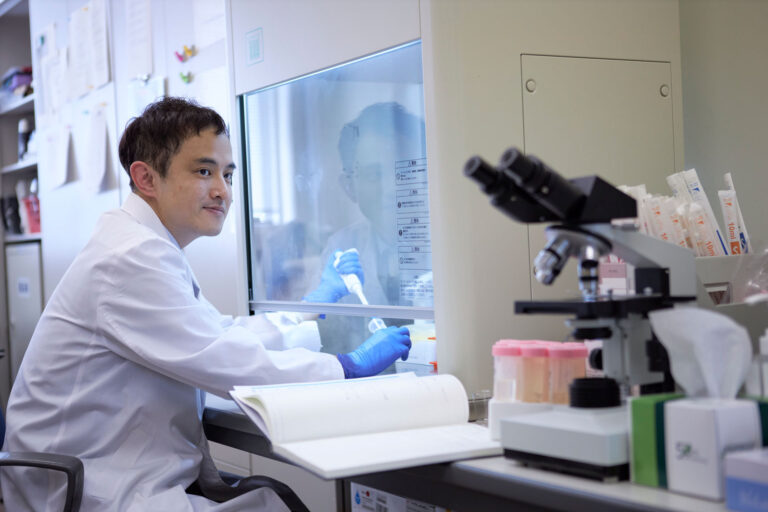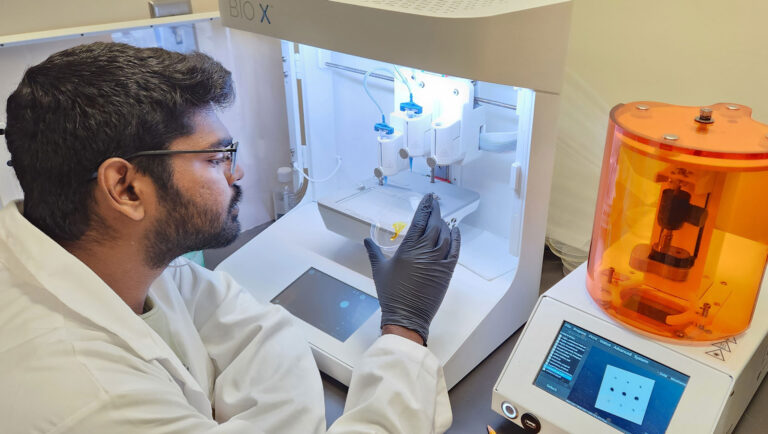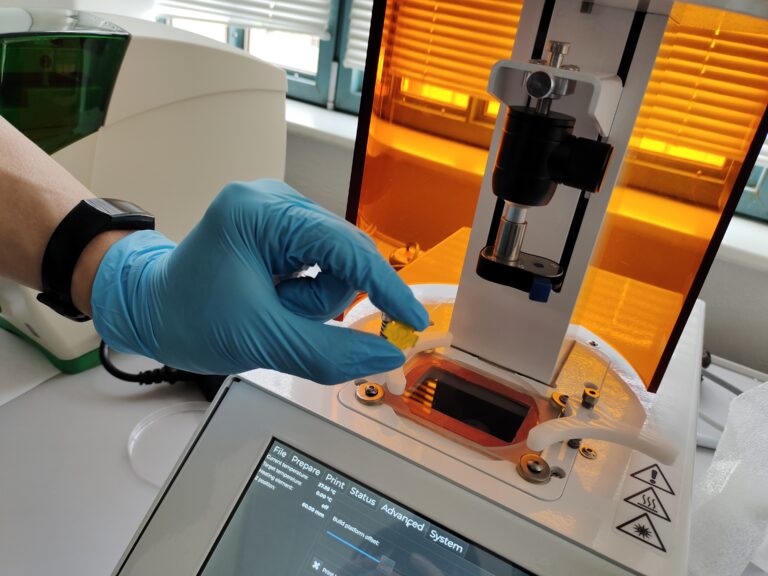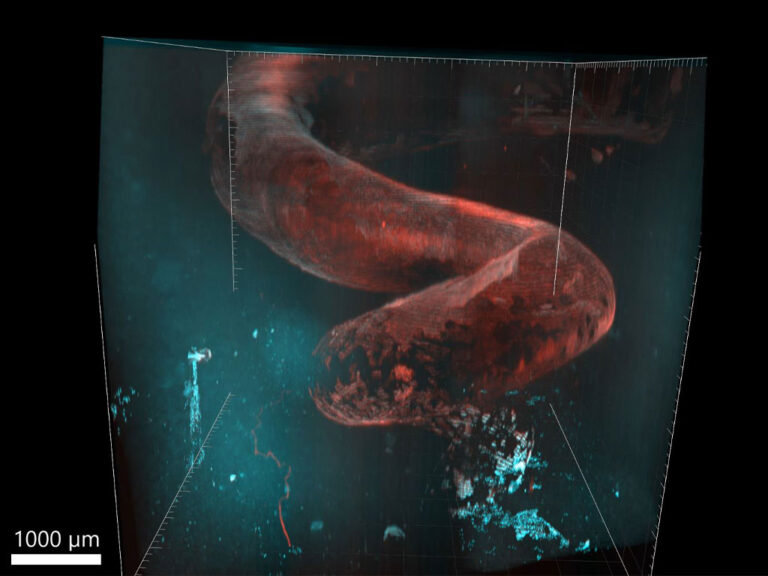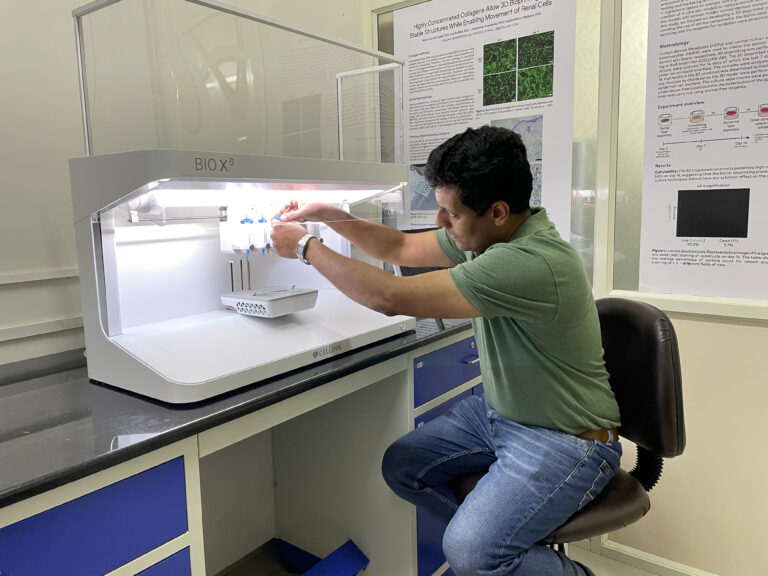Bioprinting biofilms with GelMA
Exploring the Microbiome Realm
In the world of microbiology, where countless microorganisms thrive and interact, biofilms have emerged as a key area which has profound implications on our health. Biofilms can be responsible for chronic respiratory infections and are highly problematic following orthopedic and cardiac surgeries. In the USA alone more than 2.8 million antibiotic-resistant infections occur, resulting in 35,000 people deaths (Centers for Disease Control and Prevention, USA). As such, they represent are a major challenge for clinicians and microbiologists.
The hidden world of biofilms
Traditionally, bacteria were studied as single-cell organisms with laboratory cultures often focusing on aerated flasks where the cells are considered homogenous. However, the conventional understanding of bacteria as single cells in a dispersed state has been challenged by the discovery of biofilms.
Biofilms can be described as 3D communities of more than one bacteria, that are organized together in a self-produced polymeric matrix, attached to a surface. During infections when bacteria is in planktonic (free-swimming) state, antimicrobial treatments are effective. Once a biofilm is formed the resistance can increase up to 1000 times, making antimicrobial agents ineffective and leading, in some cases, to invasive treatment such as surgery.
These complex, multicellular structures have captured the attention of Prof. Ferdinand Xiankeng Choong at Karolinska Institutet.
Despite most bacteria on Earth living within biofilms, existing approaches on selecting antibiotics and developing new ones are predominantly done through antibiotic susceptibility testing (AST) concentrating on bacteria in a planktonic state. This indicates that the dosage and therapy determined by ASTs are unlikely to effectively treat biofilm-associated infections.
This realization sparked a profound question in Dr. Choong’s mind:
"What if our existing tests and methodologies for studying bacteria are fundamentally flawed?"
Inspired by this problem, the team from Karolinska Institutet set out to develop an AST that focuses specifically on biofilms and is widely applicable regardless of the bacteria type. To accomplish this, they had to first gain a comprehensive understanding of the intricate process of biofilm formation.

Prof. Ferdinand Xiankeng Choong is a scientist with interdisciplinary focus on microbiology and biosensor development from the Center for Advancement of Integrated Medical and Engineering Sciences (AIMES) at Karolinska Institutet.
Bioprinting: New tools to study biofilms
Dr. Choong recognized the need to leverage new technologies like bioprinting, which enabled to ask new and interesting questions. Instead of using traditional methods, the team explored the impact of introducing inoculum (liquid containing bacteria) through 3D bioprinting, using GelMA (gelatin methacrylate) bioink, as a medium for the bacteria in their experiments.
In a traditional experiment, researchers would add a drop of inoculum onto a nutrient environment. As the bacterial colony starts developing, it would form a round shape resembling an eye. As the colony produces substantial amount of material, it needs to alleviate the pressure. This causes it to fold upwards as this is the only space available, ultimately leading into a rough appearance.
“If this appearance is pressure-related, then modifying the way we introduce the inoculum might lead to a completely different colony morphology. This aspect has been largely unexplored, primarily because traditional biofilm growth requires a liquid medium that spreads out upon contact with the surface.”- says Prof. Chong.
The researchers needed to understand the mechanisms behind colony morphology which led them to leverage bioprinting for their project.
Bioprinting bacteria with GelMA
An unconventional use of hydrogels
Prof. Choong’s team recognized the potential of using hydrogels in an unconventional way, namely for cultivating bacteria as opposed to the traditional way of holding antimicrobials.
Bacteria create biofilms by taking the host’s extracellular substances, for example in connective tissue, which are rich in collagen. With this in mind, the team opted to use GelMA, a natural protein derived from collagen, as a medium for bacteria in their experiments.
Since this is not a conventional use of the GelMA hydrogel, the team faced several challenges. Due to the nature of bacteria, it was not possible to cure the gel with UV light or crosslink it with salt. Furthermore, curing the 3D model might prevent the bacteria from swimming through the construct and completely prevent the formation of a biofilm. Thanks to the morphological properties of GelMA, the team was able to overcome this challenge and maintain the shape of the printed constructs without even curing the material.
In addition to this, the team established a robust correlation between the mass of the printed gel and its volume to accurately estimate and control the volume of gel used in the experiments. This was an important first step to adapt the bioprinting technology for microbial applications.
“Incorporating bioprinting brings new challenges and new unanswered questions, that opens new avenues for exploration, translating to new research areas.”
Re-defining biofilms, insights from bioprinting experiments
By bioprinting bacteria with GelMA, the team could control the surface area, surface properties, and the specific shape of the inoculated bacteria. This novel approach challenged the conventional understanding of biofilm formation and offered new insights into colony morphology.
One of the most fascinating discoveries during the research was when the bacteria were inoculated in a droplet. The extracellular matrix was mostly produced at the edge of the drop rather than in the center. This result challenges the expectation that the amount of biofilm formed depends on the age of the colony and would be highest in the center of the droplet.
To further investigate this phenomenon, the team 3D printed an empty circle-shaped construct without any bacteria in the middle. The bacteria did not grow into the empty circle at all. The bacteria were able to sense the presence of their neighbours across the empty circle and realized that growing in that direction would not be advantageous.
Furthermore, the team discovered that the amount of extracellular matrix produced by the biofilm was influenced by the number of neighbours and the angle between them. Larger angles led to more matrix production, while smaller angles resulted in less matrix.
The printing process of bacteria
“The printing process itself is very convenient.”
First the GelMA was solubilized. Then the bacteria were added to the bioink and immediately put into the temperature controlled printhead. Different geometric shapes such as full circles, empty circles, empty triangles were printed with the BIO X6 directly onto the growth media. Afterwards, the bacteria were grown into an incubator.
“The BIO X6 is the most user friendly bioprinter and matches safety regulations when working with bacteria as it has built-in HEPA filters, UV-C lights and laminar flow with vertical motorized doors, which created sterile environments similar to biosafety cabinets. Working with the BIO X6 prevented contamination issues and saved time to move petri dishes from printer to biosafety cabinets. The printheads are coupled with heat preserve caps which allowed us to print temperature sensitive bioinks like GelMA.” – says Dr. Sivakoti Sangabathuni, a post-doctoral researcher at AIMES.
Partnering with CELLINK
“We really value academic and industry partnerships as they bring together diverse expertise and perspectives.
Having CELLINK as a partner was very valuable for our research. We received specific answers, and very well-defined and tested materials, ensuring reliable results.
The quality assurance of CELLINK’s products acted as an anchoring point for us, particularly when studying dynamic entities such as bacteria.” – Dr. Choong
Bioprinting biofilms: uses in the medical and industrial fields
Being able to create biofilms in a 3D environment was only the first step for Dr. Choong’s group. Next, they plan to incorporate different substances (e.g. chemicals used to sterilize wounds) into the hydrogel to start challenging the biofilms.
Dr. Choong aims to develop Antibiotic Susceptibility Tests (AST) that directly test biofilms, to enable better treatments for patients using less and the right antibiotics as well as help prevent the over and under prescription of antibiotics. It is not only patients that could benefit from this new approach. By immobilizing substances into gels, hospital staff minimize the use of dangerous liquids that could splash or aerosolize, in that way providing a safer environment.
In the future the team hopes to enable the whole process from housing the antibiotic in a hydrogel all the way to inoculating the bacteria onto the AST, through bioprinting.
Embracing Bioprinting in Microbiology Research: Recommendations and Exciting Possibilities
“It is an exciting technology to use. There is a lot to explore! For us at AIMES who love to translate technology from one discipline to another, it is an exciting way to grow your research. When you use new technologies, you can answer questions in your work much better. You also find a lot of new questions, and that generates new and exciting research.”
Are you looking to incorporate bioprinting into your research?
Our experts will guide you in the right direction.
